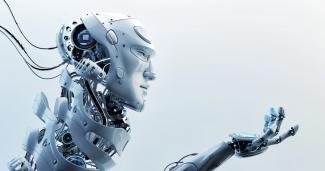
Instructions
Do the preparation task first to help you with the difficult vocabulary. Then read the article and do the exercises to check your understanding.
TEST ‘There’s this huge excitement around robots,’ says Dr Nick Hawes, Senior Lecturer in Intelligent Robotics, School of Computer Science, University of Birmingham. ‘Everyone really believes, as we do ourselves, that robots are going to have a huge impact on our future – in workplaces, in roles in various industries.’ But there is one problem that motivated Dr Hawes and the group at Birmingham in their research. ‘The fact that these robots would only function for two hours, and only do one useful thing once, made us think that we are not getting close to doing the science that will allow robots to have this huge impact.’
The result of this was ‘Bob’ the robot, which received much media attention as ‘Bob’ was shown working as a security guard, patrolling the offices of a security company. ‘Bob’ was designed as part of a research group called STRANDS, and is made up of seven universities across Europe. ‘The STRANDS project has focused on what we can do to make a robot function for more than an hour or two – for days, weeks and months,’ says Dr Hawes. There are two interesting things about this, he says.
Controlled environment
Firstly, there’s the science and engineering challenge of making an ‘autonomous robot, a robot that can do things for itself, function for that length of time in an environment it has no control over. Normally when you put robots into places you have to control everything, to tie things down, make sure nobody gets in the robot’s way. You want to be able to make a robot cope in a real human environment.’
Secondly, there are real advantages when a robot can function for an extended period of time. ‘The robot can start to learn things about this environment that it wouldn’t ever see normally,’ says Dr Hawes. ‘It gets to see daily routines and patterns: what time people come and go; where you put your mug of tea on your desk every day; things that humans have a common-sense understanding of, but robots don’t. Our aim is for robots to learn that over time.’
From driverless cars to washing machines
But do we have a fixed image of robots and have certain expectations of what they look like and how they operate? Is our image of robots too human-like, and is that a negative factor? ‘I think that is the way science fiction has shown them to date,’ says Dr Hawes. ‘I’m not really interested in robots that look like humans. There are some advantages to having human-like features, humans naturally understand other humans from their physical movement. Having a robot with some human-like physical movement – with eyes looking at places, positioning your body to look. Humans understand that as having some meaning, and just generally it makes them feel more comfortable about other robots.’
He points out that our environment, from door handles to cupboards, is created for humans so having a human-type robot is easier to fit in. ‘But at the same time,’ he argues, ‘robots are really tools, a technology. Their form should be dictated by their function. A driverless car is a driverless car and that’s a robot. To some a washing machine is a robot. There are many autonomous intelligent machines that can do things on their own. Some of them may end up looking like humans but most of them won’t.’
The next step with Bob is extending the amount of time he can function. Other STRANDS partners are working in the area of ‘care’, in a hospital in Vienna where a robot is doing some work. ‘There is going to be a big industry building and programming robots so we think our students need to be looking at that,’ says Dr Hawes. So at the university they ‘teach robotics; we have a Robot Club where students work on Bob and similar robots. We are really trying to get everyone, from 18 upwards, working on this technology because it is going to be huge.’
Would you like a robot to help you in your daily life? What would you want it to do for you? Would you prefer your robot to look like a human or a machine?

Comments